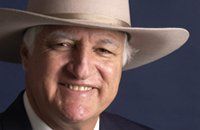Clean Energy Corridor
The Northern Australian Clean Energy Corridor proposal is a series of clean energy power generators to be connected by an AC transmission link from Mt Isa to Townsville – to join North West Queensland (NW Qld) to the National Grid. This will deliver clean, renewable energy to NW Qld – a region currently reliant on two small, ageing and very costly gas fired power stations, but still very valuable continuing assets.
The corridor is projected to provide about 20,000 jobs(1), generate a healthy 1,510 MW electricity ($550m/yr) and produce 1,250 mg ltrs ethanol ($1,100m/yr). That is the equivalent of 2.8% of Australia’s electricity and 8.0% of Australia’s petrol.
Electricity generated will also aid the development of the NW Qld Minerals Province providing an additional $6b and 72,000 jobs(1). These additional jobs in mining plus electricity and bio-fuel should generate an additional population of 1,000,000 people across the vast open plains and rugged ranges of North West Queenslandall the way to Townsville and Cairns. This will relieve the pressure on our already choked capital cities and giving our country the space to grow.
Benefits
There are many benefits to the Clean Energy Corridor. The obvious benefits being an accessible energy supply and the reduction in CO2 emissions. But what other impacts will it have on the North West Queensland region?
Environmental
A 13,297,208 tonnes/yr3 reduction in CO2 emissions through clean energy and ethanol. Both petrol and ethanol emit CO2, but only ethanol (through sugar cane growth) absorbs CO2.
Eradication of the Prickly Acacia
Reduction of aromatics and small particles both of which when dense are highly carcinogenic.
By 2020, potentially provide the Commonwealth Government with 20% of their renewable energy target.
Provide a significant contribution to the State Government’s emissions reduction target.
Economic
Cheaper electricity than carbon taxed coal.
Cheaper fuel – in 2007 ethanol in Brazil cost AU74c ltr and the USA AU84c ltr whilst in Australia petrol was almost double at $1.47 ltr.
Mines are able to prosper due to accessible energy.
Less reliance on overseas energy suppliers.
Reduces imports and increases exports which will significantly improve Australia’s balance of payments.
Provides replacement fuel as Australia’s oil self-sufficiency has dwindled from 90% to 63%.
Growth in infrastructure and local businesses.
Replace agricultural production lost in the Murray Darling Basin.
Community
Cleaner, healthier living environment. Scientific studies indicate that ethanol use dramatically lowers cancer rates. In the USA, ethanol use was mandated under the Clean Air Act.
A return of people to dwindling outback towns.
Over a thousand jobs created directly from construction and installation.
Thousands of jobs created indirectly from mining and demand for peripheral community services.
Inject community pride with such an historic project.
(1) Working on 12 jobs per million.
(2) Australian Energy Regulator, State of the Energy Market 2009, www.aer.gov.au. (2008/09 QLD wholesale price of $36 per megawatt hour) plus an estimated NEMCO premium based on distance.
(3) Australia’s national greenhouse accounts—national inventory report 2007, vol. 1, p. 25. (880kg CO2 emissions per MWh.).
(4) Assuming an ethanol wholesale price of 90 c / litre. 5. Assuming 1 litre of petrol emits 1.99 kg CO2 e.
CONTACT DETAILS
INNISFAIL
Visit: Owen St And Edith St, Innisfail QLD 4860 Australia
Post: PO Box 1638 Innisfail, Qld 4860
MOUNT ISA
P: (07) 4743 3534
F: (07) 4743 0189
Visit: 42 Simpson St, Mount Isa City, QLD, Australia
Post: PO Box 2130 Mount Isa, Qld 4825
MAREEBA
P: 07 4092 1632
F: 07 4092 6114
Visit: 141 Byrnes St, Mareeba, QLD, Australia
CANBERRA
(when Parliament is sitting)
P: (02) 6277 4978
F: (02) 6277 8558
Local Call within the electorate
P: 1300 301 942
Email:Bob.Katter.MP@aph.gov.au

